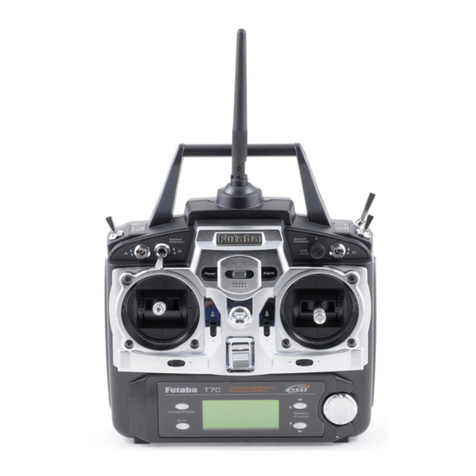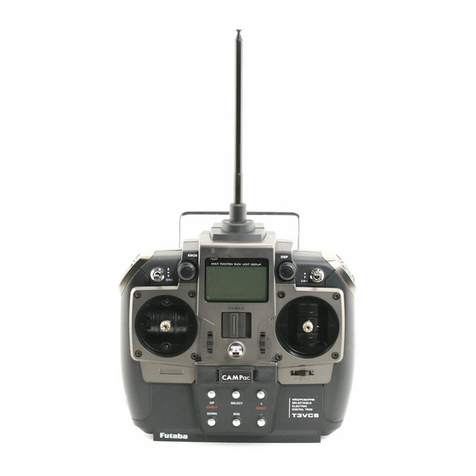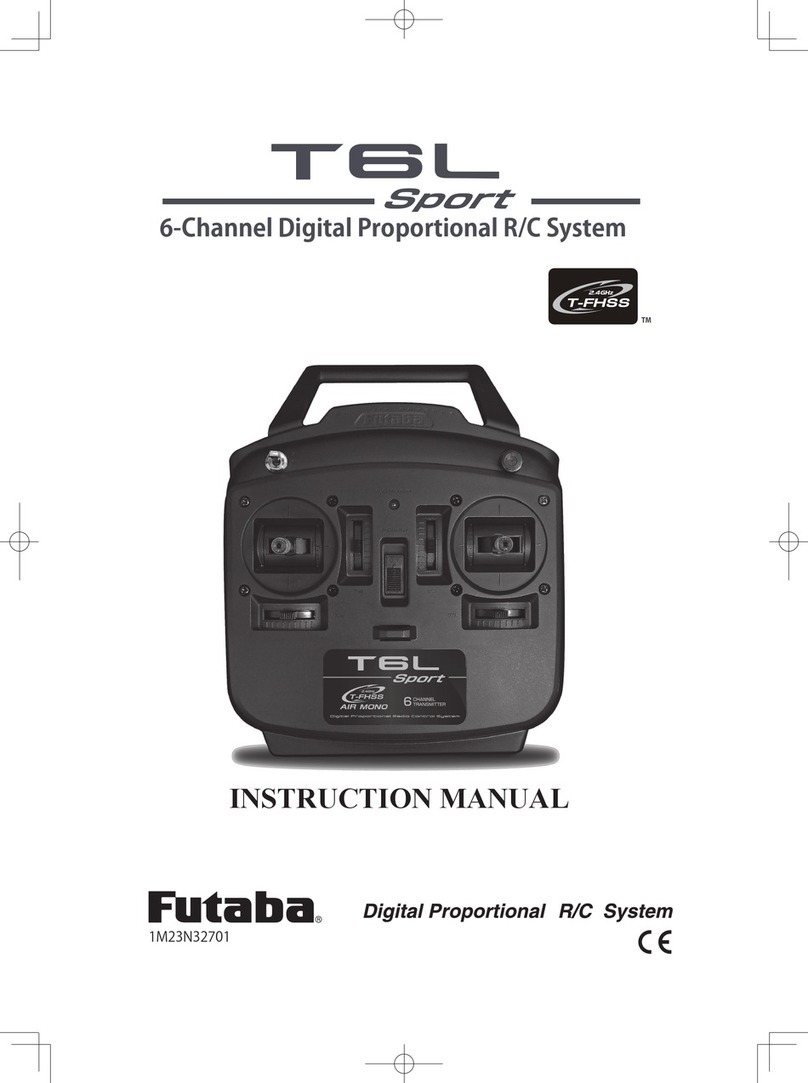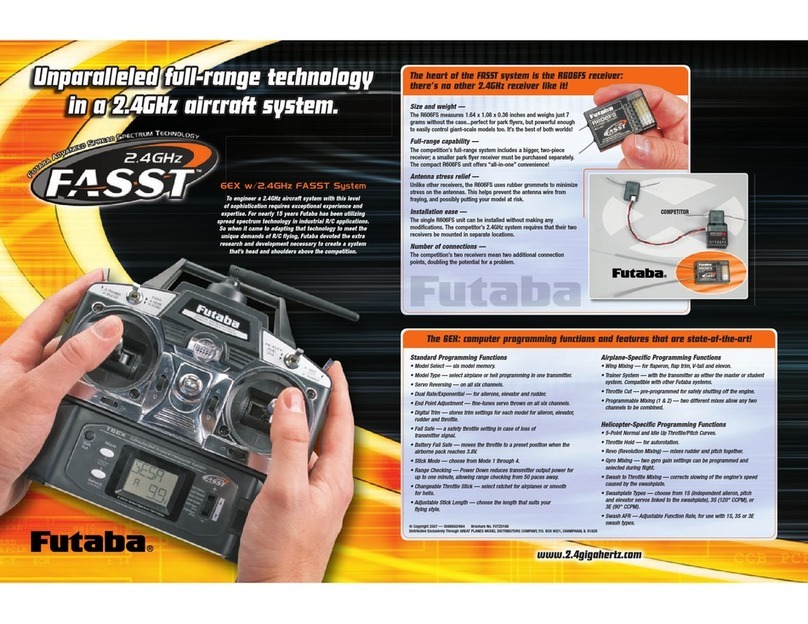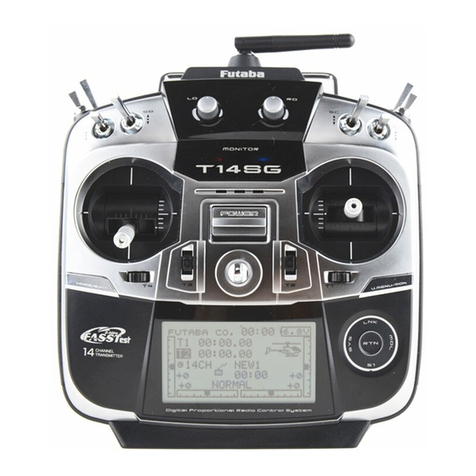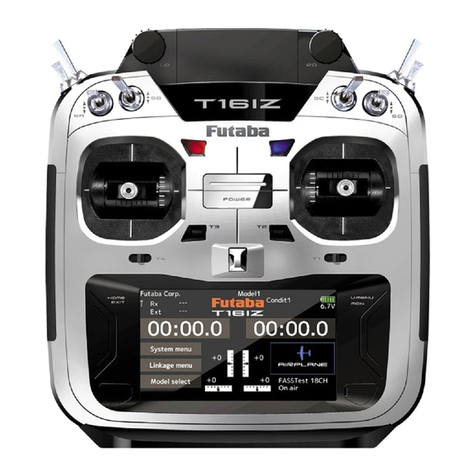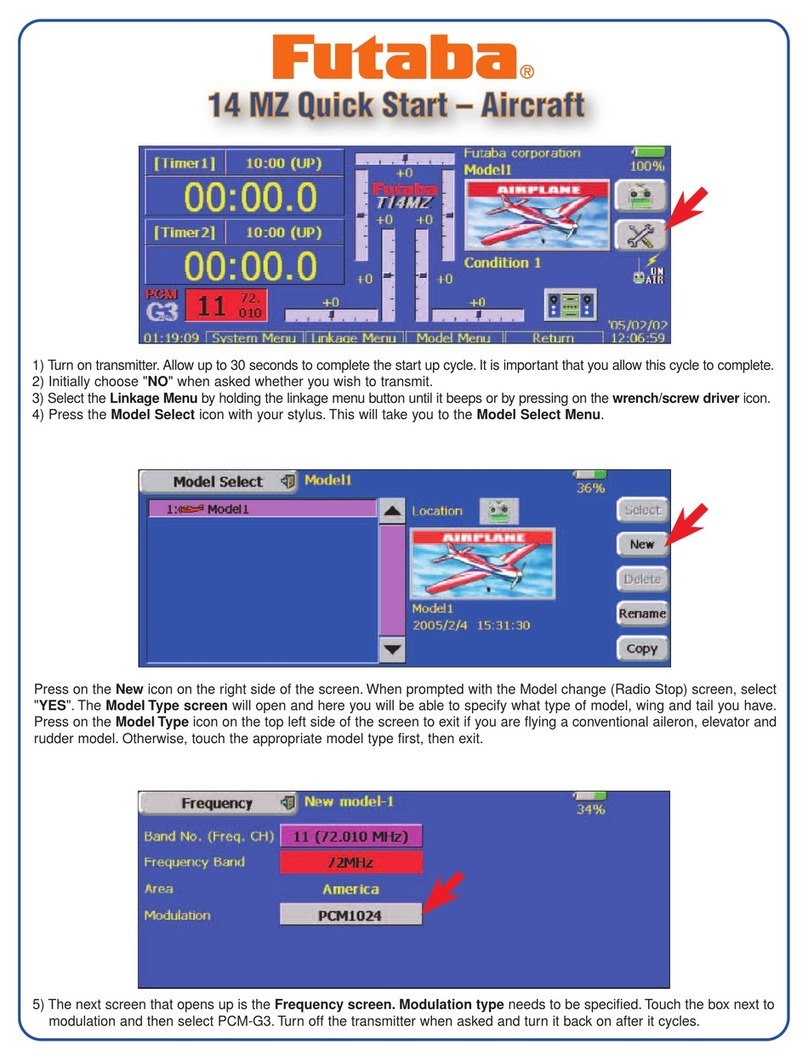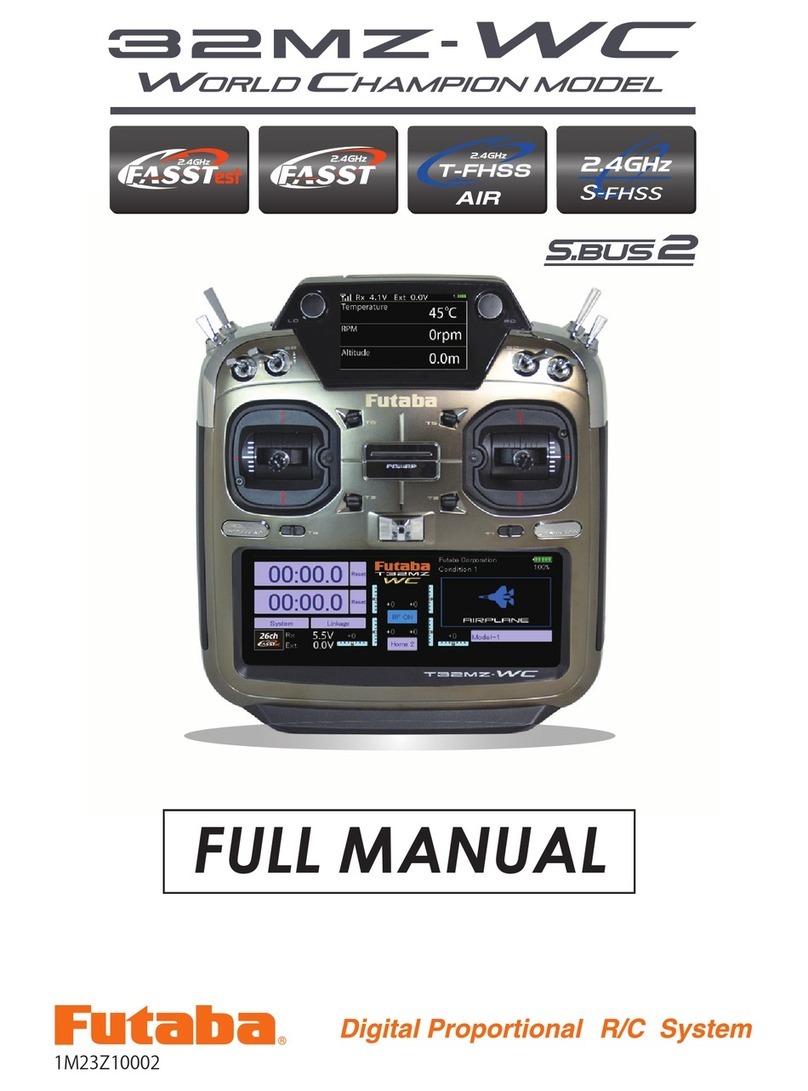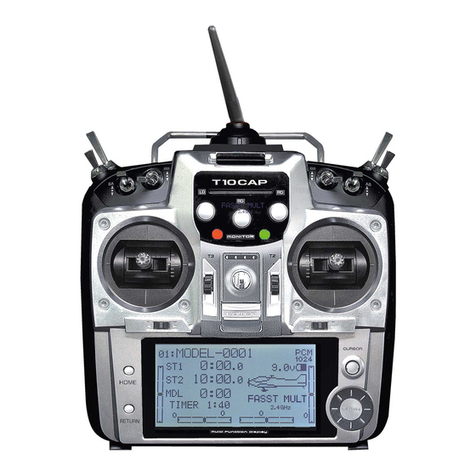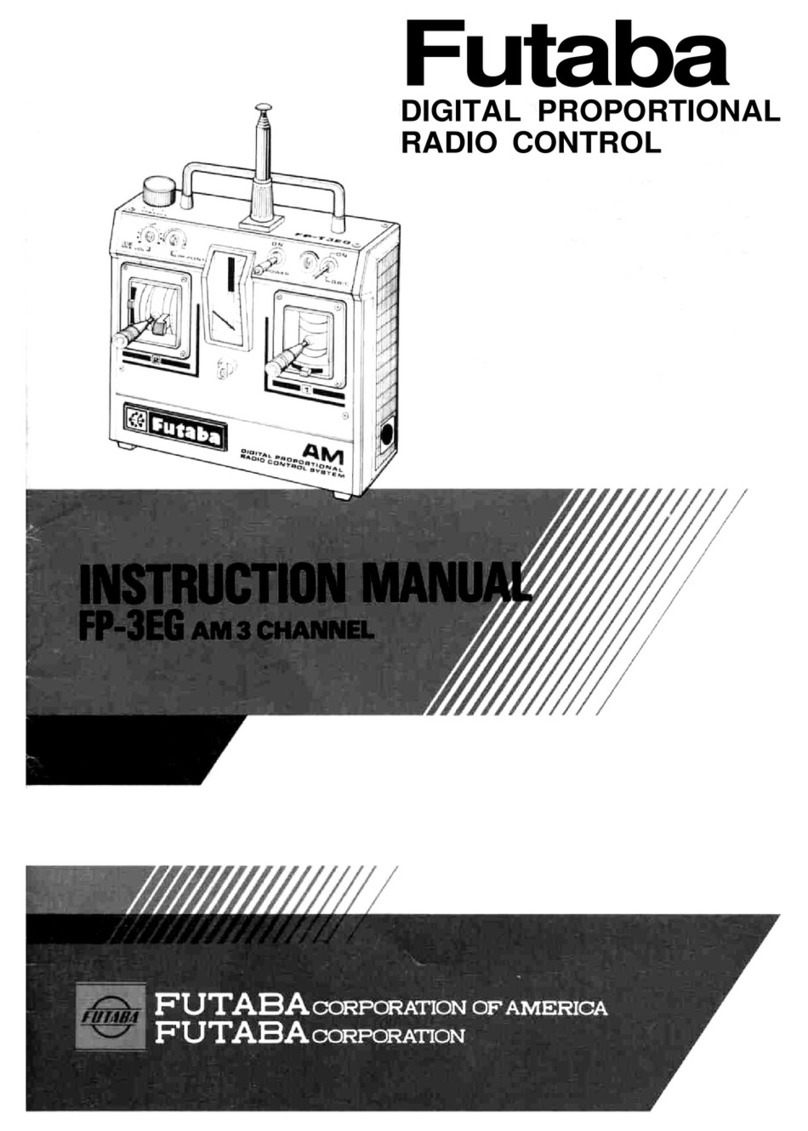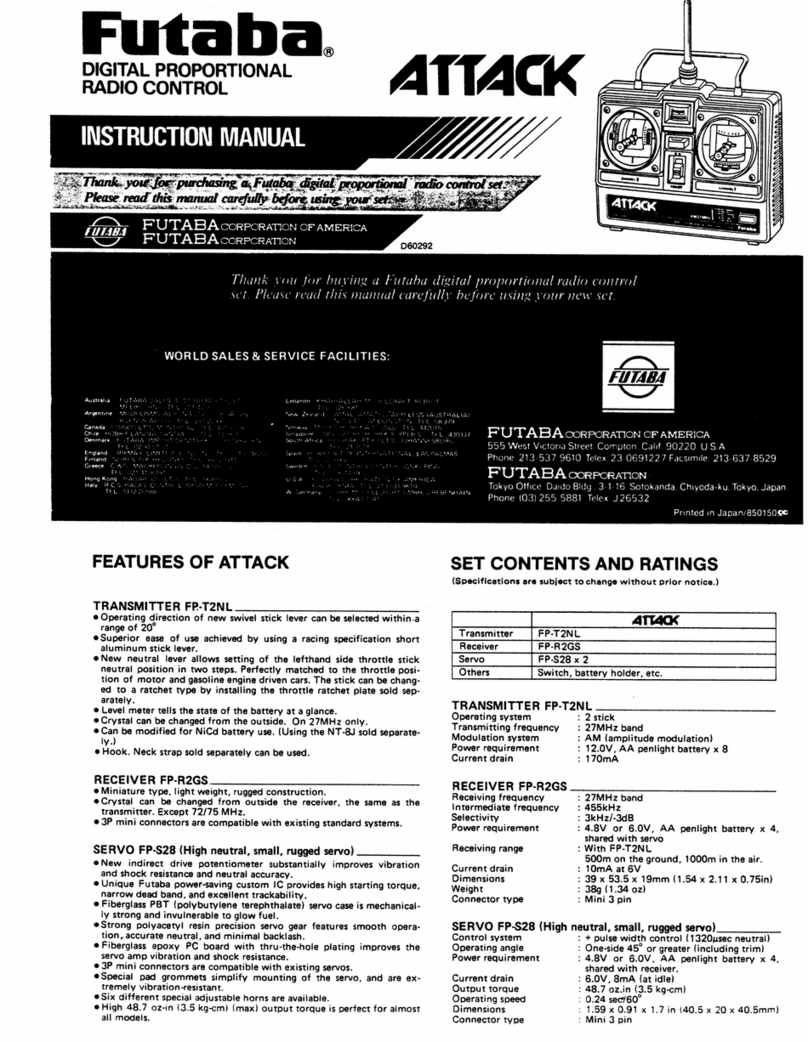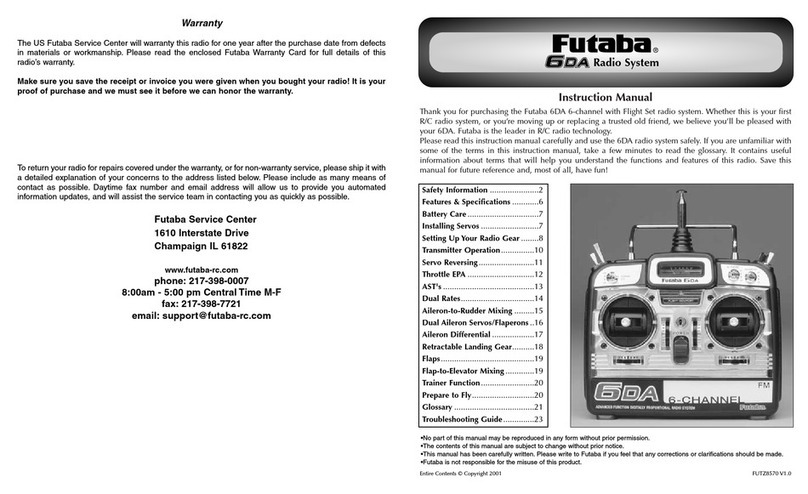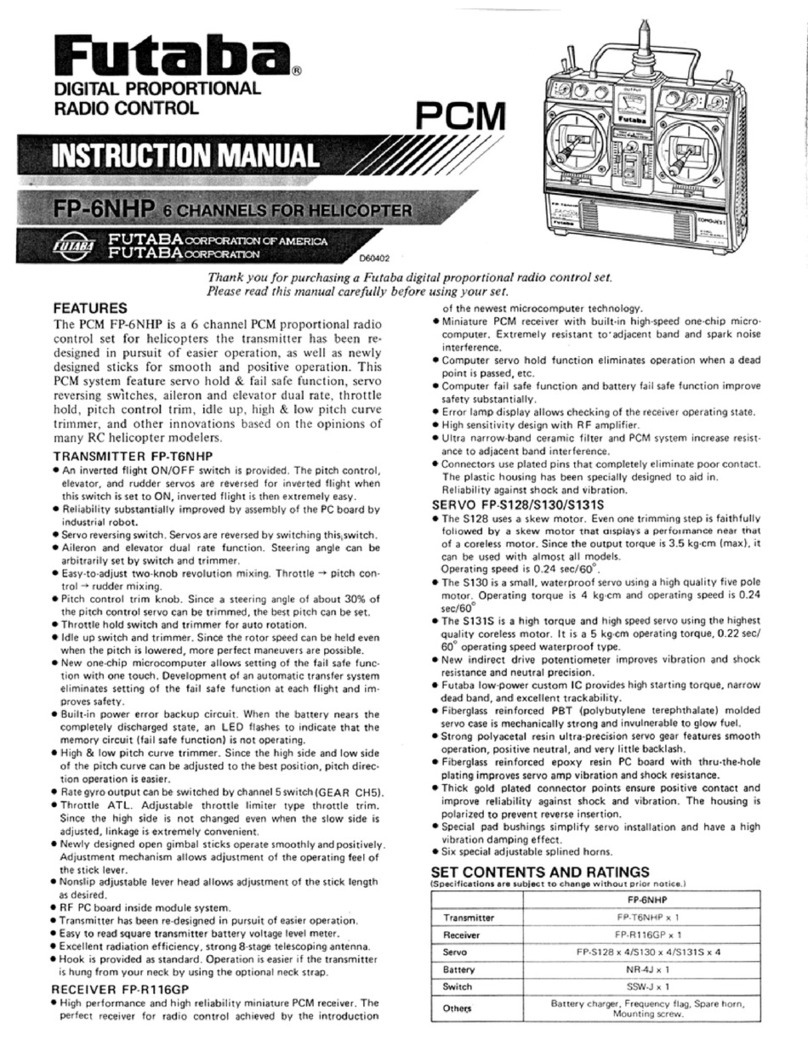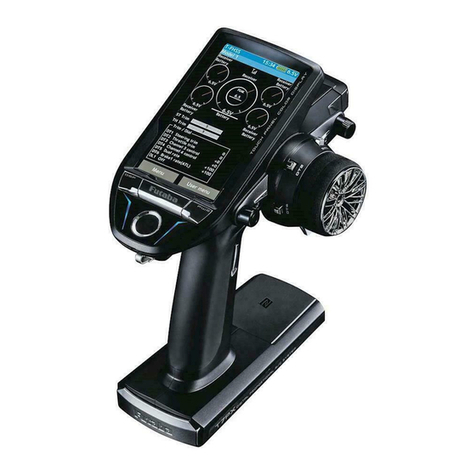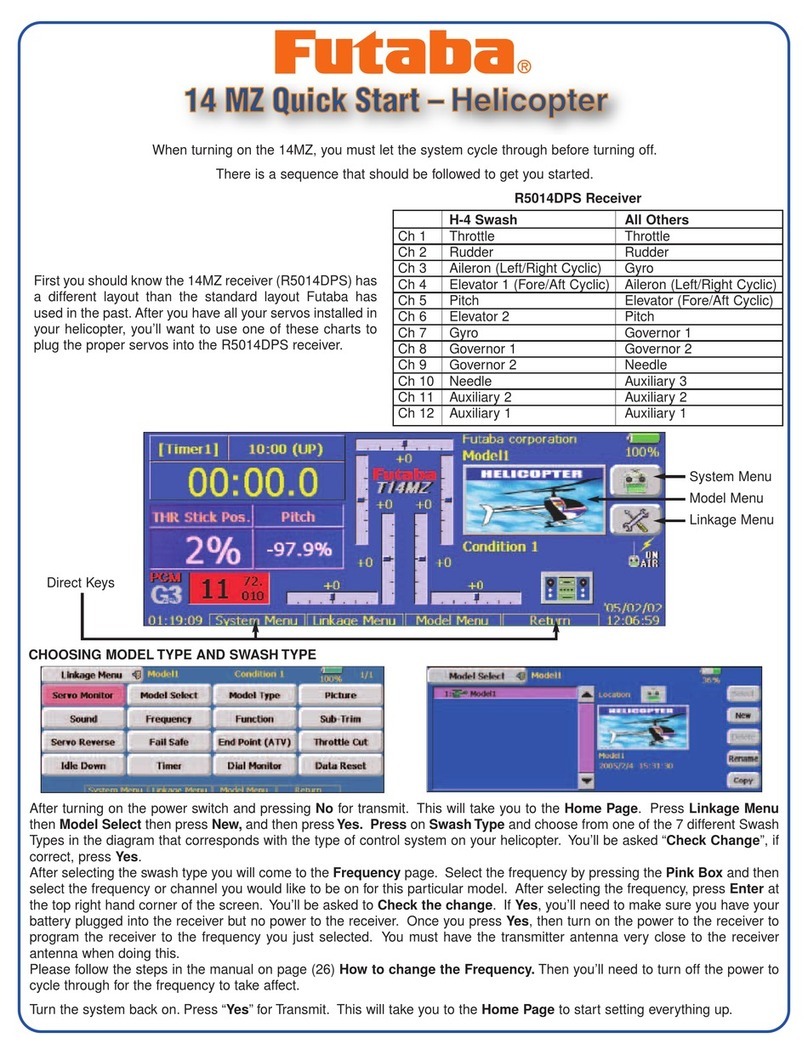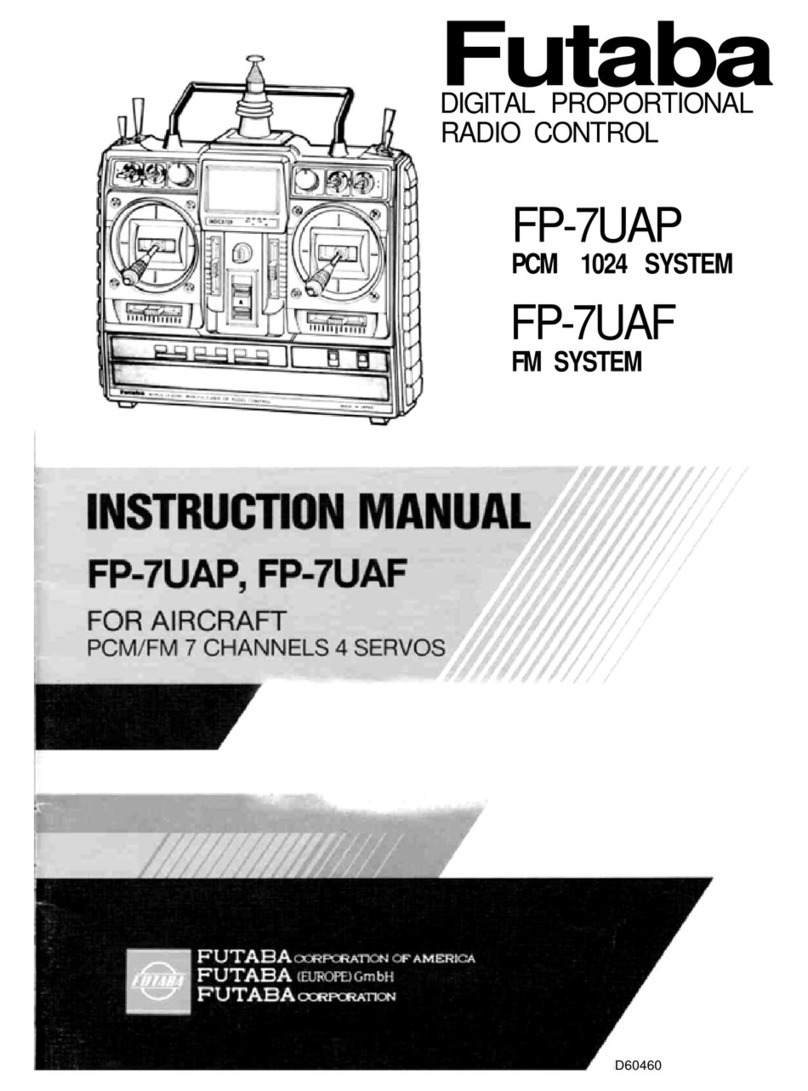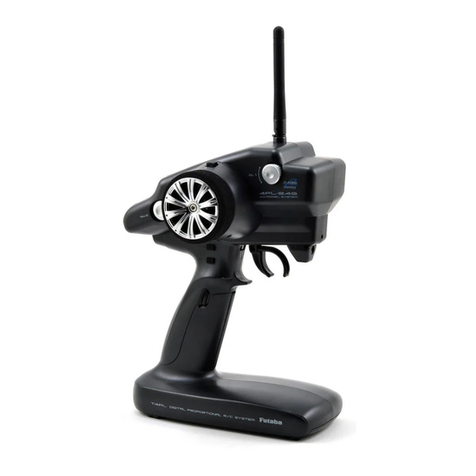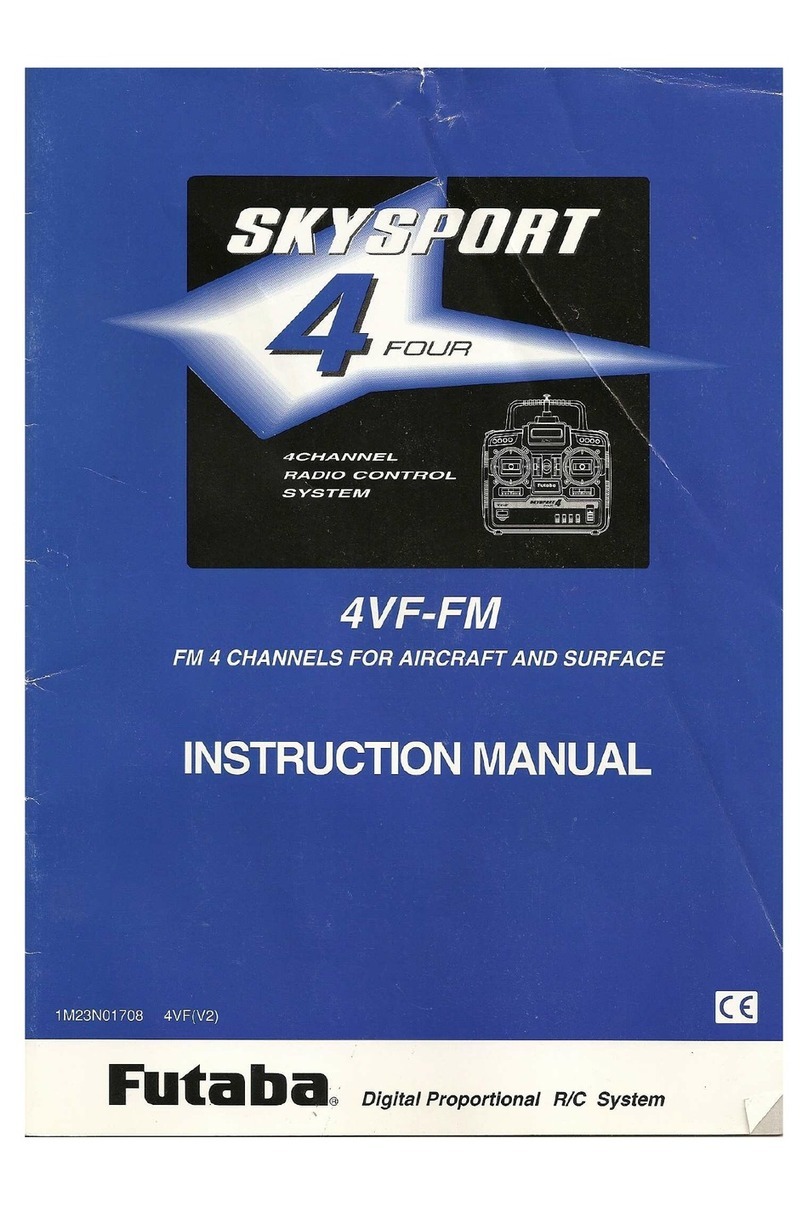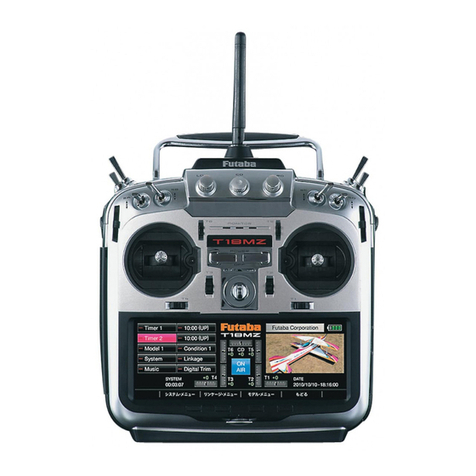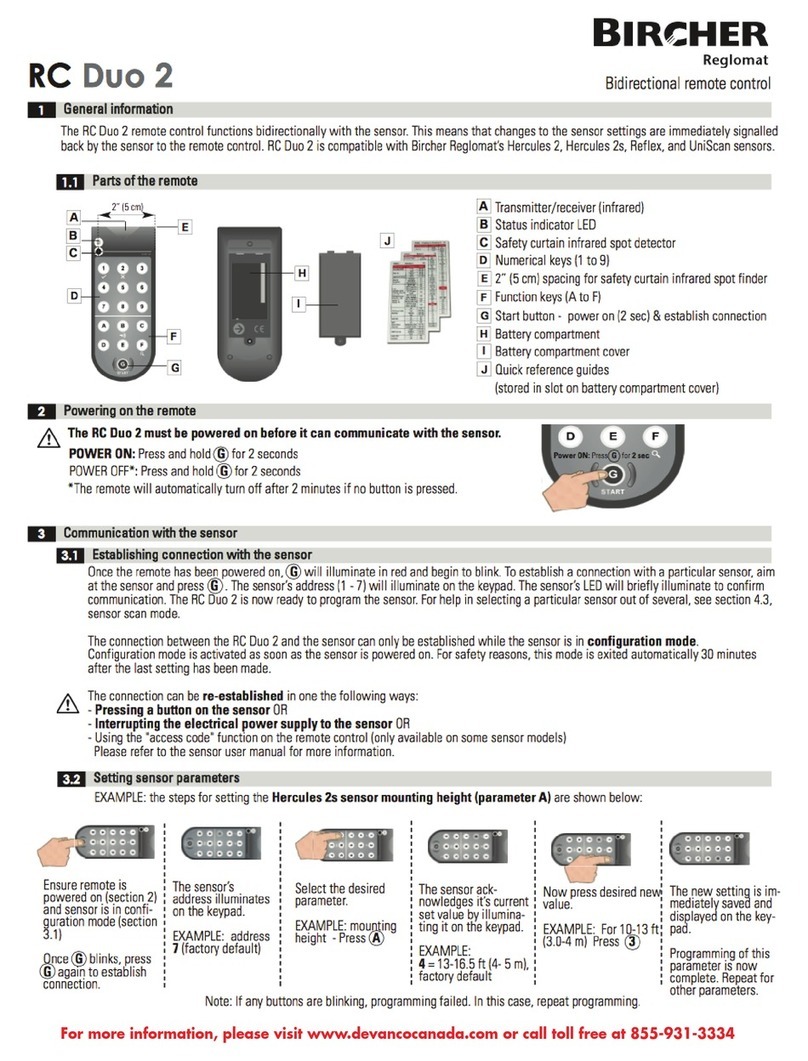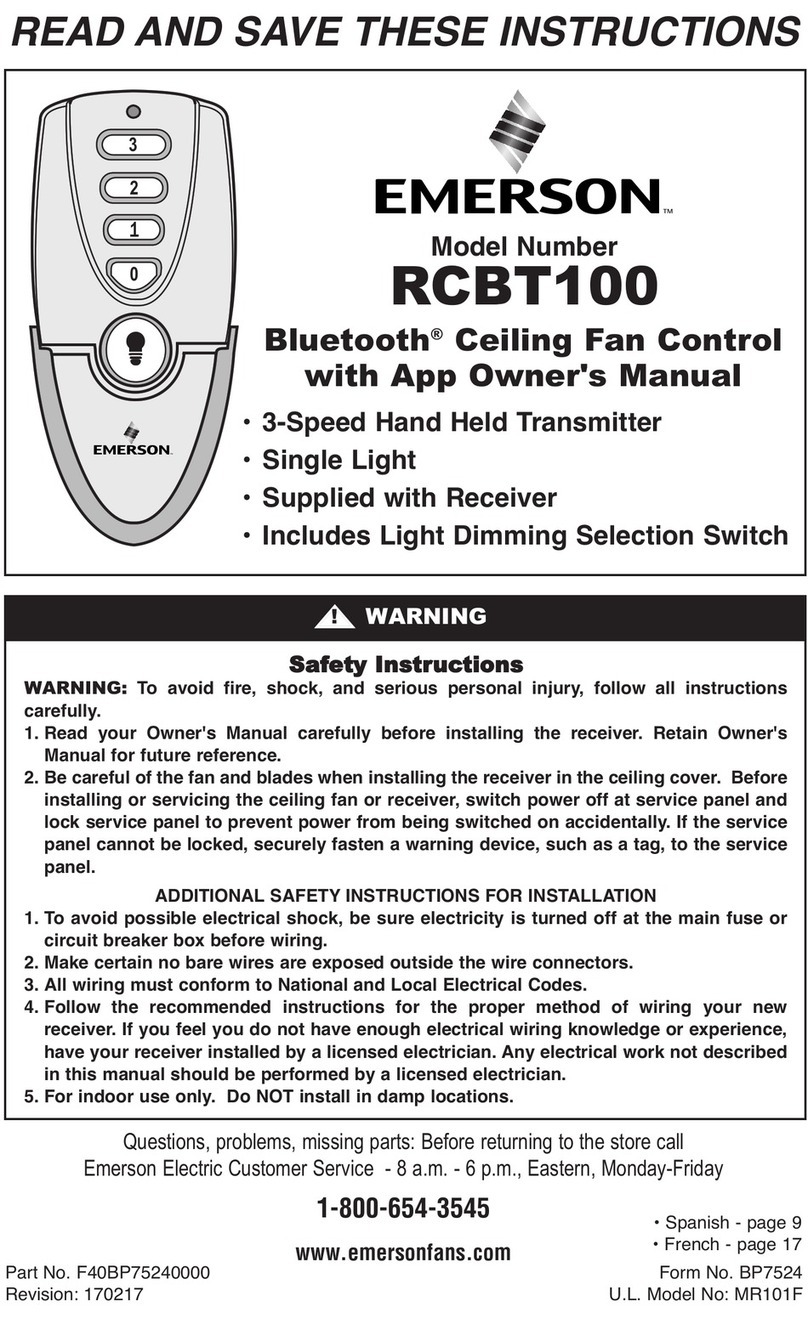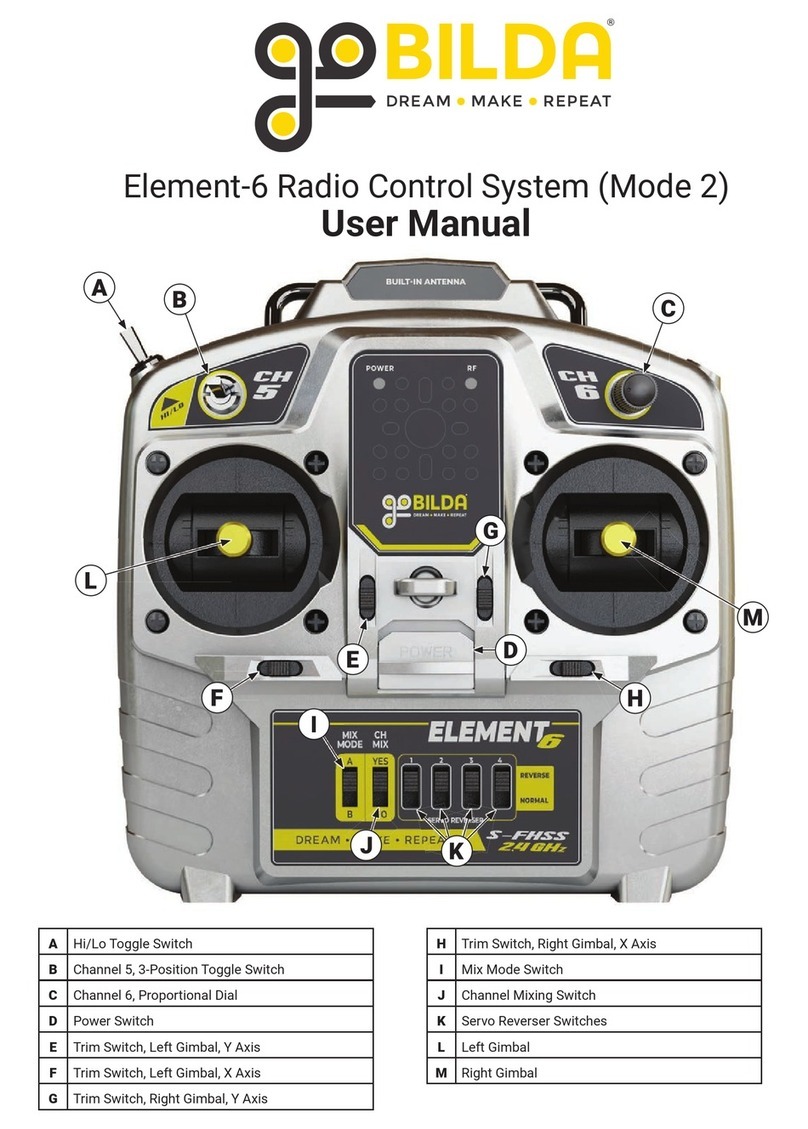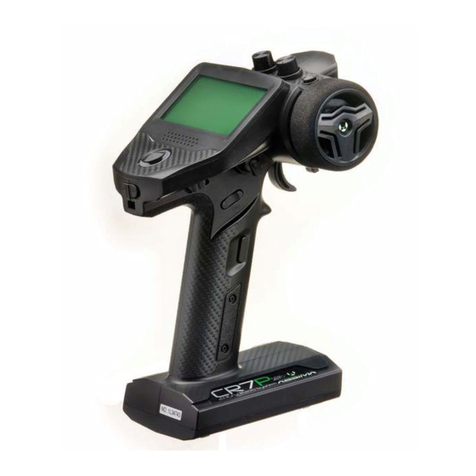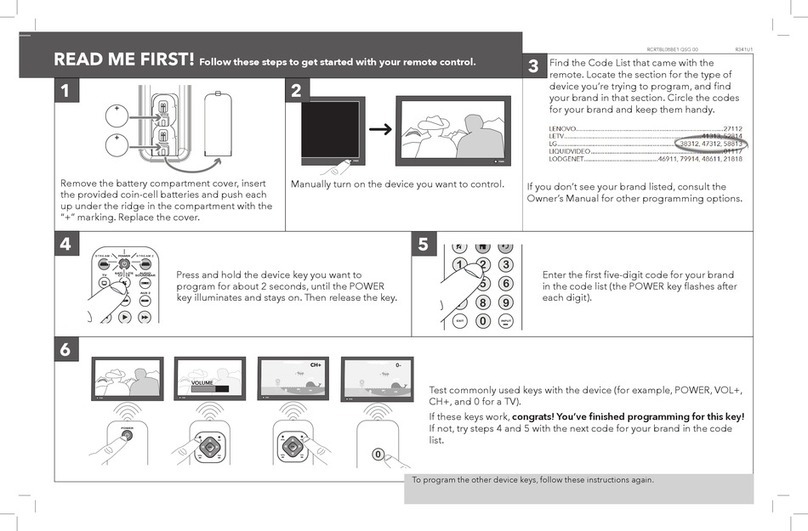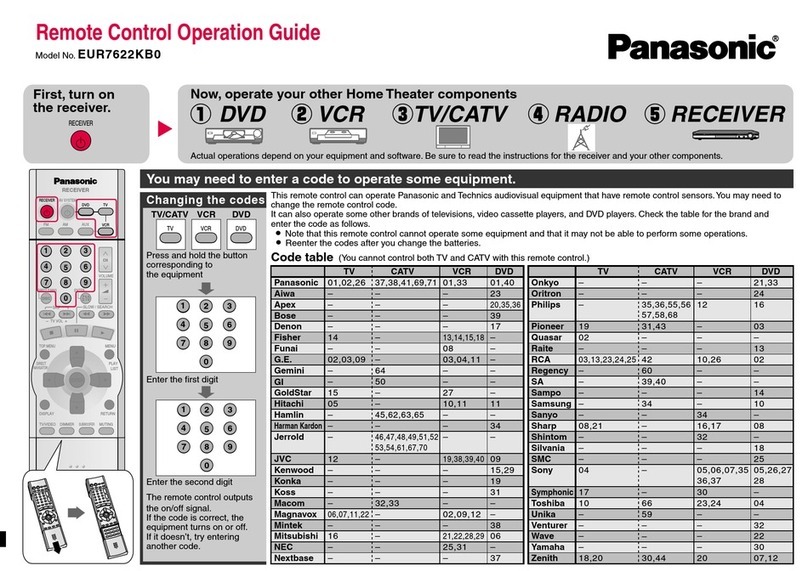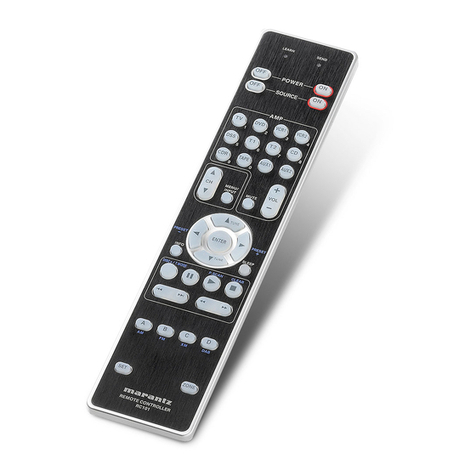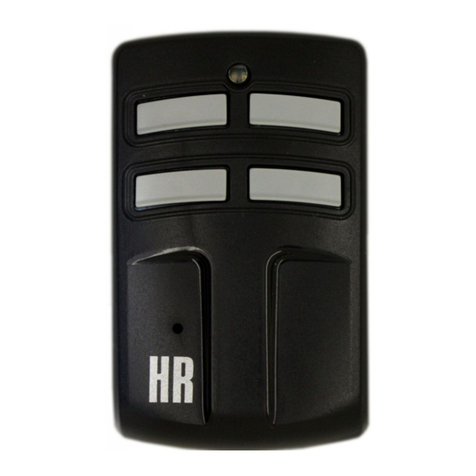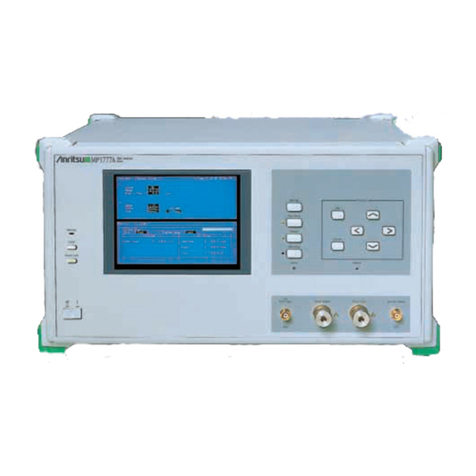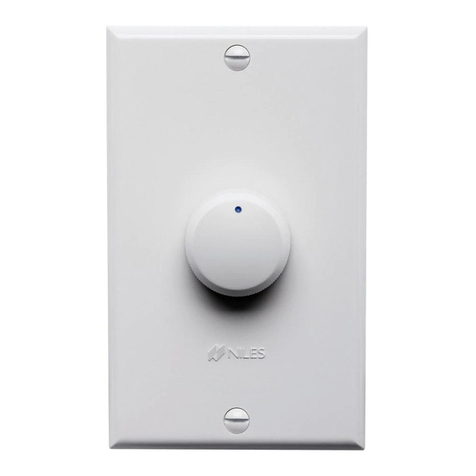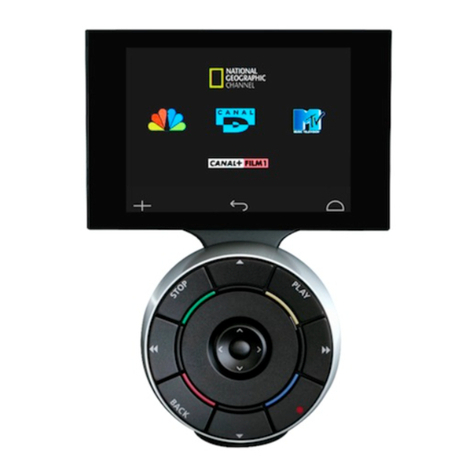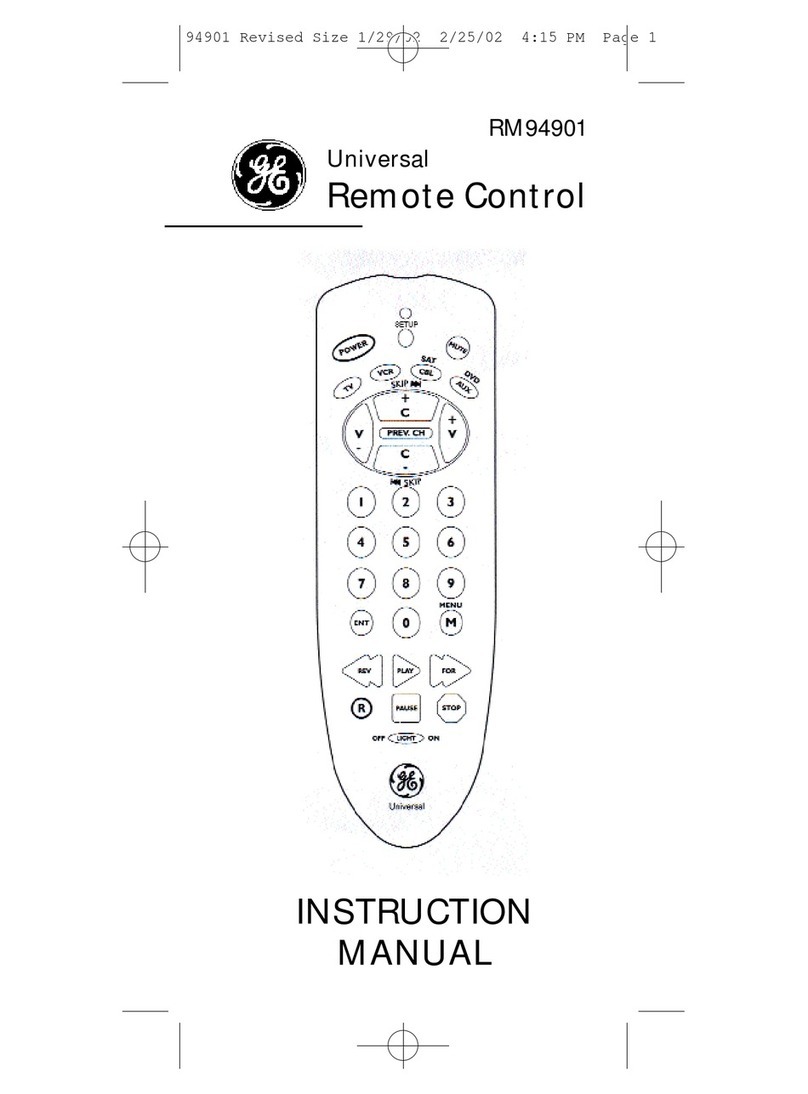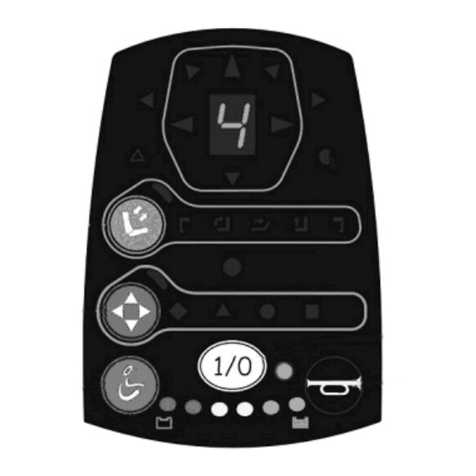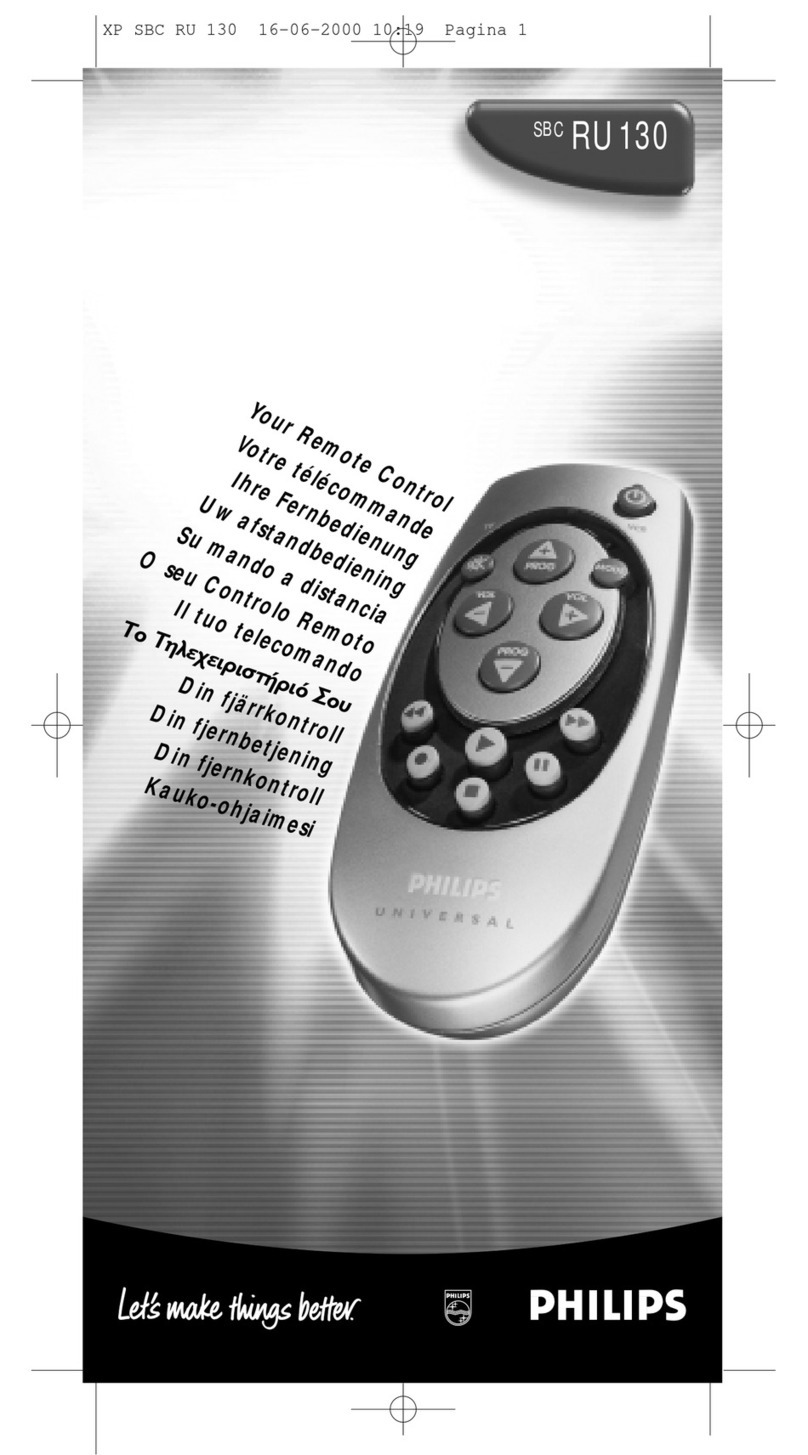•Even though the receiver antenna islong,donotcut or
bundle it.
•Installthe servossecurely. Tighten the mounting screws
until the rubber grommet iscrushed slightly.If the screws
are too tight, the cushioning effectwillbeadversely affect-
ed.
•Wrapthereceiverinsponge rubber. Waterproofand dust-
proof thereceiverby placingitina plasticbag and wrapping
arubber band around the open end of thebag. Do the same
withthereceiver/servobattery..
•Use therubber bands wrappedaround the receiver to hold
the servoand switchleads.
•Aftermounting iscomplete,recheck each part, then check
the range by makingthetransmitterantennaas short as
possible,extendingthereceiverantennafully,and operating
the set froma distanceof 20m to 30m. The movement of
each
servo
should
follow
the
movement
of
each stick
of
the
transmitter.
•Aftermounting and checking are complete, take your model
to the shopwhereyoupurchasedtheset,or to an experienc-
ed radiocontrolmodeler,and ask them to teachyouhow to
handle your radio control set inthe proper manner and to
inspect your set-upcarefully.
•Toenjoyradiocontrolmodels fully,besure to observe all
safetystandards.
AILERONAND ELEVATOR DUAL (dual rate ON,
OFF) ADJUSTMENT
When the dual switchisset to ON, theservothrowismade
smallerby the amount shown by thehatched linesinFig.10.
The servothrowcan be setfrom40% to100% ofthe total
travelby adjustingthetrimmernexttotheswitchwitha flat
bladed screwdriver.WhenthedualrateswitchissettoOFF,
the
throw
is
normal. When
desiring
a
larger
throw,
such
as
for
spins, etc.,set the dual rateswitchtoOFFand adjustthe
throwmechanicallyby horn and rod adjustment.Set the
dual
rate
switch
toon for
level
flightand adjust the
trimmer
forthe requiredamountofthrow.
When the dual rateswitch is set to OFF,dual rateis set and
the throw becomes large.
Fig.
11
This horn permits shiftingof the
servo neutralpositionattheservo
horn.Settingand shiftingthe
neutralposition
a) Angle divisions
b) Effect
Fig.
12
Fig.13
1)The splined horn has 25 seg-
ments. The amount ofchangeper
segment is;360: 25=14.4°
2) The minimum adjustableangle
isdeterminedby thenumber of
arms or number oftheholes.For
fourarms,theminimum adjustable
angleis:
To shifttheholescenterlineto
theright(clockwise)relativeto
baselineA,shiftarm2 tothepo-
sitionofarm1 and setittothe
positionclosesttobaselineA.
(Example]Fora fourarmhorn,
theangularshiftper segment
is
14.4°. Theshifttotherightis
90°
-
(14.4
x6)
-
3.6°
To shiftby thesame angle inthe
oppositedirection,use theoppo-
sitearm number.
Fig.
14
Arm3 shift4.8° totheright,arm
6shifts2.4° totheleft,andarm 4
shifts7.2° totherightand left.
For a sixarm horn, turnthe arm
counterclockwiseand set arm 2
to thepositionofarm 1. Thead-
justableangle is60°- (14.4 x 4)
=2.4°.
Fig.
15
The following splinedhorns are optional.
Fig.
16
Baseline A
HORN A HORN B HORN C HORND BORN B HORNP
USING THE ANTENNA FREQUENCY FLAG
Insert the frequencyflaginto
the flag holder as shown here.
The flagcan beattached to, and removed
from,theend of the transmitterantenna
with onetouch.
Fig.17

